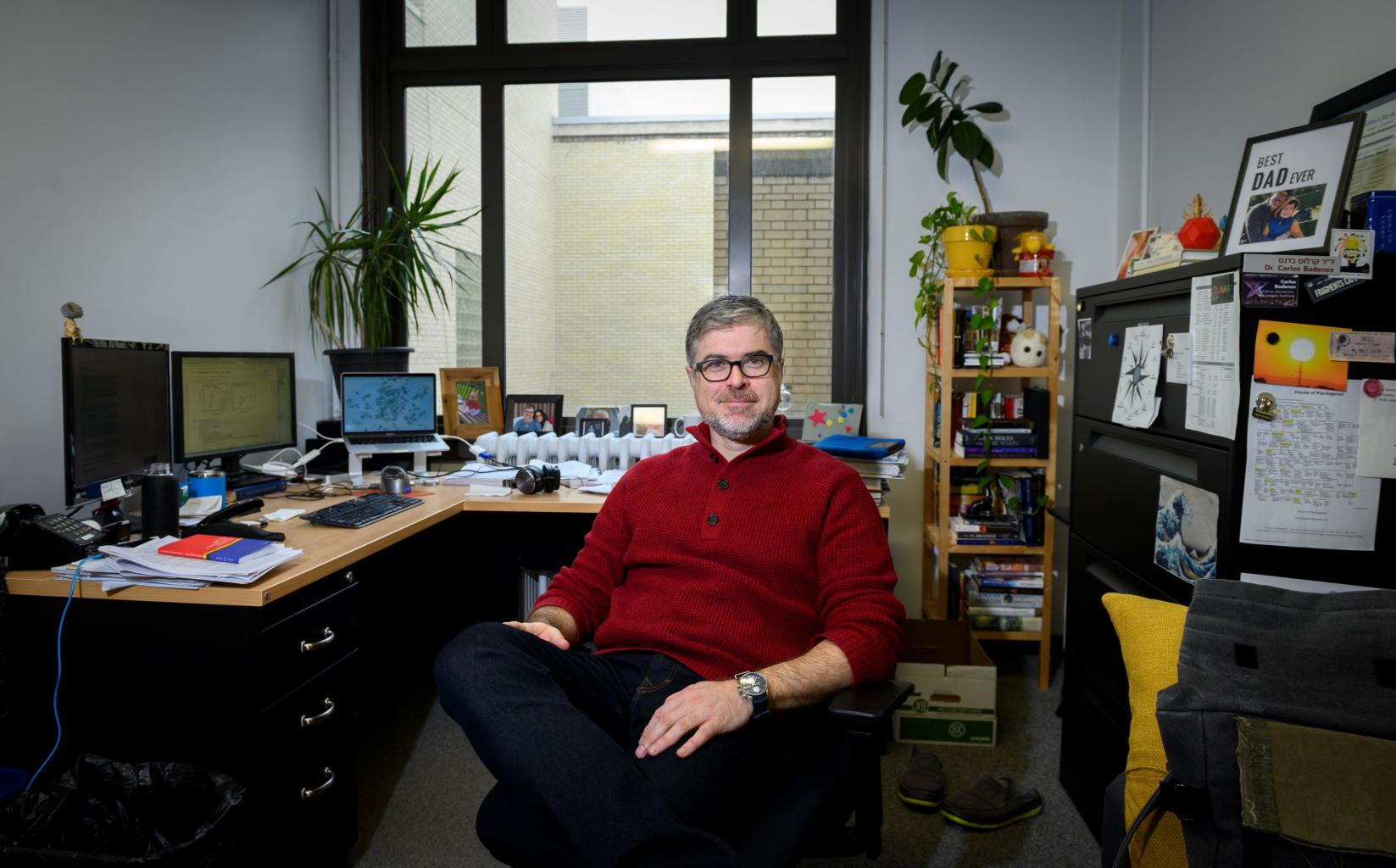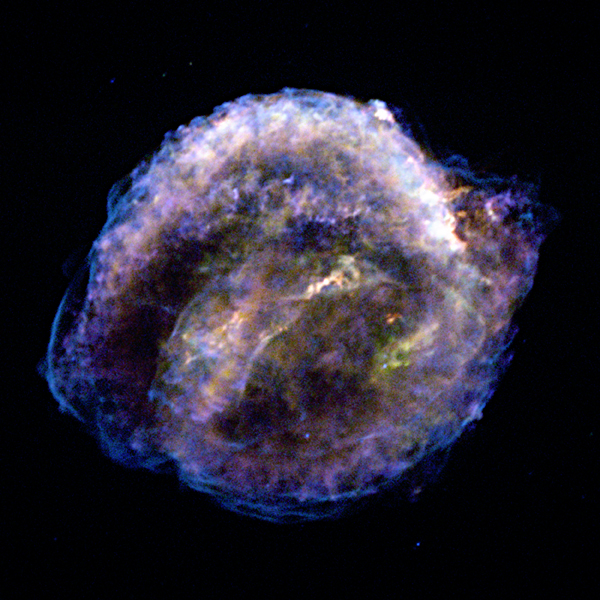
In the spring of 1006 CE a new star appeared in the constellation Lupus that was chronicled by observers in modern day China, Japan, Iraq, Egypt, and parts of Europe. It was the brightest stellar object ever recorded on Earth, bright enough for several months to be easily visible in daylight, even said to cast shadows. The star was a supernova, later designated by year as SN 1006. Forty-eight years later SN 1054 exploded, creating the Crab Nebula.
Most supernovae are not dramatically visible from Earth and don’t leave visible evidence. What they do leave are supernova remnants: expanding balls of gas heated to millions of degrees Celsius. The remnants hold clues to the origins and deaths of stars, and the lab of Pitt astrophysicist Carles Badenes searches for those clues helped by the resources of the Center for Research Computing.
The team headed by Badenes, associate professor in Pitt’s Department of Physics and Astronomy, works with data collected by astronomical surveys such as the Sloan Digital Sky Survey (SDSS), which have collected visible spectra of millions of astronomical objects. (Pitt has participated in SDSS since its inception in 2003; Badenes is an associate member of the fifth installment of the survey, scheduled to begin in 2020).
Badenes’ group focuses particularly on the remnants of Type Ia supernovae, thermonuclear explosions of white dwarf stars – cold, dense, earth-size stars no longer producing fuel
by nuclear fusion. Type 1a supernovae are important for many fields of astrophysics, but their
fundamental cause and nature are not clear.

“A white dwarf is the end point of evolution,” Badenes describes. “It is the fate of all the suns in the universe. They are usually very stable. But some explode. It is believed that supernovae progenitor stars have a binary companion – two stars orbiting each other. The ultimate cause of the
supernova may be a transfer of mass from the binary companion to the white dwarf, which destabilizes it. But many details in this picture remain
obscure. To learn more, we rely on new observations – unfortunately you can’t do experiments in astrophysics.”
Badenes’ group has developed statistical methods using CRC resources to study the visible and X-ray spectra of supernovae remnants, which provide insight into the mass and makeup of the progenitor stars and thermodynamic history of the explosion.
“One statistical run we could do on a laptop, but we are running several hundred at once,” Badenes explains. “Dedicated facilities exist but they have a very narrow tailored scope and are expensive. We need the in-between scale of CRC, and it’s
great to have that facility at that level.”
Graduate student Héctor Martínez-Rodríguez worked with CRC resources conducting studies of X-ray spectra of supernova remnants to test predictive models of supernova explosions. He also developed a new method to find supernova remnants at optical wavelengths.
“Picture the data gathering as bundles of optic fibers collecting light from a galaxy to produce a spectrum,” Martínez-Rodríguez describes. ““We looked at the hydrogen line in roughly a thousand galaxies to find supernova remnants. We needed the CRC resources for this. The resolution of each fiber is large, several thousand data points, each galaxy has dozens of fibers with data on each specific location, and there are thousands of galaxies in the survey. It is impossible to do that on any computer in the Physics department, but the calculations at CRC took only a few days.”
Martínez-Rodríguez describes the method. “The spectra resemble cardiograms – mostly steady lines with small ‘chirps.’ The chirps produced by a supernova remnant are different from those produced by the gas of its host galaxy. A supernova remnant is a fast-expanding bubble of gas in the emptiness of space that heats the gas around it, producing that distinctive broad line. We apply a series of mathematical operations to reveal the supernova remnant’s velocity and distance.”
Martínez-Rodríguez also used CRC resources for another project “There are two theories about Type Ia supernova progenitors. One is that matter from a star like our sun is pulled to a white dwarf by the white dwarf’s gravity, causing the white dwarf to explode. The other is that two white dwarfs are involved which exchange matter and explode. The consensus today favors the latter.”
“But, in my paper, we found something like evidence for a single star – the high neutron content observed in the supernovae remnants can’t be explained by the double white dwarf star model. The X-ray spectra of some supernova remnants show neutron-rich lines and evidence of a uniformly expanding gas environment around the remnants.”
Martínez-Rodríguez has returned to his home country of Spain but work in Badenes’ lab continues. NASA awarded the lab a grant to further develop their theoretical models and apply them to observations using the Chandra X-ray Observatory, the world’s most powerful X-ray telescope. They will also have access to new data from an imaging X-ray satellite NASA is launching in late 2020.
“We want to have a large set of models in place as more data comes in,” Badenes explains. “The core of the theory is math, but what we do in astronomy is more down to earth, if you will, because we apply models to things that already exist.”
Contact:
Brian Connelly
Pitt Center for Research Computing
bgc14@pitt.edu
412-383-0459
